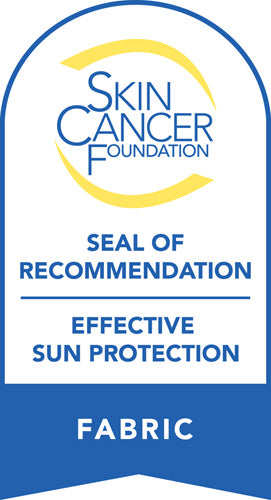How To Understand the UV Index
Did you know that the UV Index is a measure of the intensity of UV rays? It can tell you how likely it is for you to get a sunburn.
UV rays are a form of radiation that comes from the sun, and they can cause skin cancer, premature skin aging, and other health problems if you're not careful.
The UV Index can help you avoid sunburn or other health problems by telling you how intense the UV rays are. Read on for our full breakdown of everything you need to know about the UV Index.
Understanding the UV Index
The UV Index is a measure of the amount of ultraviolet radiation (UV) that is expected to reach the Earth's surface at any given time. The higher the number on the UV Index, the greater the potential for sunburn.
The UV Index is a forecast of the expected UV radiation reaching the Earth's surface. The index is based on measurements of the sun's ultraviolet (UV) radiation taken at several wavelengths. The index is expressed as a number between 1 and 11+, with 1 being the lowest and 11+ being the highest possible UV Index.
The UV Index is a valuable tool that can be used to help you protect yourself and your family from the harmful effects of UV radiation. The index can also be used to plan outdoor activities so that you can minimize your exposure to UV radiation.
When the UV Index is high, it means that there is an increased risk of sunburn and other skin damage. It is important to remember that even if the UV Index is low, you can still be at risk for sunburn if you are not careful.
The Differences Between UVA and UVB
When most people think of the sun, they think of two things: warmth and radiation. The sun is our main source of heat, and it’s also the biggest contributor to radiation in our environment. There are two types of solar radiation: UVA and UVB.
Sunburns are caused by UVB radiation, which enters the skin at a shallower depth than UVA radiation, which penetrates deeper and is the major cause of skin cancer.
During the middle of the day, the sun's rays are brightest, therefore it's better to avoid direct sunlight. Wear sunscreen, a hat, and sunglasses if you must be out in the sun during peak hours.
What Time of Day Are UVB Rays at Their Strongest?
The time of day when UVB rays are the strongest is typically in the morning until about midday.
However, this can vary depending on location and other factors. To be safe, it's always a good idea to check the UV index for your area before heading outside.
Sun Protection: Exploring Your Options
The UV Index is a measure of the intensity of ultraviolet radiation (UV) reaching the Earth's surface at a particular location. The higher the number, the greater the UV exposure.
You can use the UV Index to protect yourself from the sun by following these tips.
- If the UV Index is high, seek shade whenever possible;
- Wear clothing that covers as much skin as possible, including a hat and sunglasses;
- Use sunscreen with an SPF of 30 or higher, and reapply it frequently.
Another great way to protect yourself from the sun is to wear a wide-brimmed hat. This will help protect your head, neck, and face from the sun's rays. You can also wear sunglasses to protect your eyes.
The Beauty of UV Clothing
Did you know that UV clothing offers a variety of benefits?
In addition to shielding you from the sun’s harmful rays, UV clothing can also help keep you cool and comfortable in warm weather. Plus, it can protect your skin from premature aging and skin cancer.
If you’re looking for ways to protect yourself from the sun this summer, consider investing in some UV clothing.
Should I Just Avoid Sun Exposure?
No, you don't have to.
It’s no secret that getting a good amount of sun exposure is essential for our health. Sunlight helps our bodies produce vitamin D, which is important for overall health and can help protect us against diseases like cancer.
But what you may not know is that there are other benefits to sun exposure as well. Sunlight also has a positive effect on our moods and can help relieve conditions like depression and seasonal affective disorder (SAD).
So go ahead and enjoy some time in the sun! Just be sure to wear sunscreen to protect your skin and sun protective activewear. And if you’re going to be out in the sun for a long period of time, make sure to stay hydrated by drinking plenty of water.
Dealing With Sun Damage
If you get sunburned, you should take a cool bath or shower to soothe your skin.
You can also put a cold, damp cloth on the burn to help relieve the pain. Ibuprofen can also help to reduce the pain. You should avoid scratching the sunburn, and if it blisters, you should avoid popping them.
If you're looking for more ways to soothe your sunburn, consider using aloe vera gel or a moisturizer. You can also try a cool compress made with chamomile or lavender essential oil. These home remedies can help provide relief from the pain and discomfort of a sunburn.
Cracking the UV Index Code
The UV Index is an important tool for understanding the intensity of the sun's ultraviolet radiation.
It can help you plan your day to make sure you're taking the necessary precautions to protect yourself from skin cancer and other adverse effects of too much sun exposure. Understanding how to read and use the UV Index will empower you to make smart decisions about when and how long to stay in the sun.
It can also help you make better clothing choices, like using sun sleeves when you're golfing. Now, you should check out our detailed breakdown of UV Index reading instructions, and you'll be good to go.



